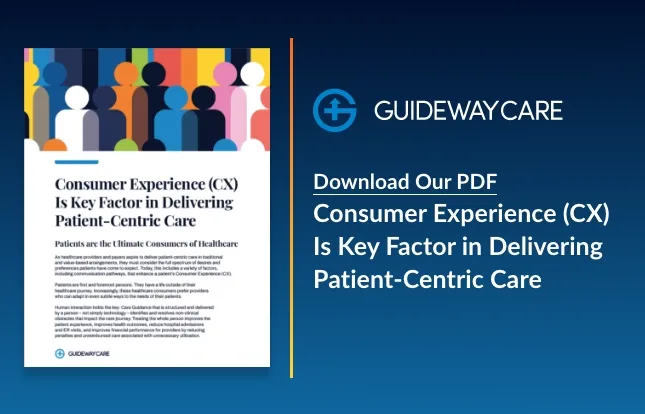Revolutionizing Patient Care: The Power of Care Guidance Beyond Lay Navigation

In a recent article published in Healthcare Business News, Craig Parker, CEO, Guideway Care, delves into the transformative role that care guidance plays in addressing non-clinical factors that contribute significantly to patient issues, totaling up to 80%. The focus on patient navigation programs often falls short, emphasizing engagement but lacking meaningful patient activation.
The Challenge with Traditional Patient Navigation Programs
While healthcare institutions are adept at clinical care, extending this expertise to non-clinical patient interaction programs presents challenges. There’s a risk of intimidation, reluctance to share social determinants of health (SDoH) issues and working below the top of license. This is where an outsourced “care guidance” program and partner become invaluable.
The Care Guidance Advantage
1. Bridging the Human-Tech Gap: Optimal patient care involves a human touch that automated technology alone can’t provide. Care guides, specially selected and tech-enabled, establish a peer-to-patient connection, fostering trust and enhancing communication.
2. Addressing SDoH: Care guidance takes into account the influence of SDoH, providing personalized services by trained care guides. These factors significantly impact an individual’s ability to access care and adhere to treatment plans.
3. Proactive Solution: Modern care guidance is proactive, resolving barriers before they become problematic and costly. It extends beyond lay navigation, encompassing non-clinical conversations and systemized assessments to support disease-specific clinical conditions.
How Care Guidance Works
Care guidance programs revolve around specially selected and tech-enabled “care guides” who establish a peer-to-patient connection. This human-led approach is crucial, especially considering limitations in accessing digital health technologies, ensuring personalized and meaningful peer-to-patient relationships.
The Impact on Nursing Shortages
A key advantage of care guidance is its positive impact on nursing shortages. By offloading time-consuming tasks, it provides an innovative and efficient solution, freeing up nursing staff to focus on high-value clinical tasks.
Data Insights for Operational Improvement
Effective care guidance platforms capture SDoH data and disparity-related barrier resolution, providing insights beyond typical electronic health record (EHR) systems. Machine learning anticipates patient needs, offering just-in-time communication based on condition-specific protocols.
Achieving Success in Quality Payment Programs
Providers participating in value-based care arrangements find support in care guidance. It supplements clinical protocols with SDoH efforts, paving the way for successful contracting in CMS programs and advancing health equity.
Read more: 5 Ways CMS’ BPCI Advanced Model Will Impact Your Practice
Bottom-line Benefits of Outsourced Care Guidance
Beyond navigation efforts, care guidance provides a unique solution-as-a-service. It collaborates with hospitals and providers, extending support to enhance care coordination and management. The benefits include reaching more patients, removing non-clinical tasks from nursing workloads, performing follow-ups, scheduling appointments, ensuring compliance and reducing unnecessary service utilization.
In conclusion, care guidance emerges as a vital solution to navigate the complexities of the U.S. healthcare system. By achieving the right care at the right time and place, it aligns with healthcare’s “triple aim” of improving patient experience, enhancing care quality, and reducing total costs. As a lower-cost extension of a hospital’s clinical team, care guidance works to provide equitable, affordable, and high-quality healthcare.
For further insights, you can access the full article here.
Contact Us Today To Learn How We Can Help
"*" indicates required fields




